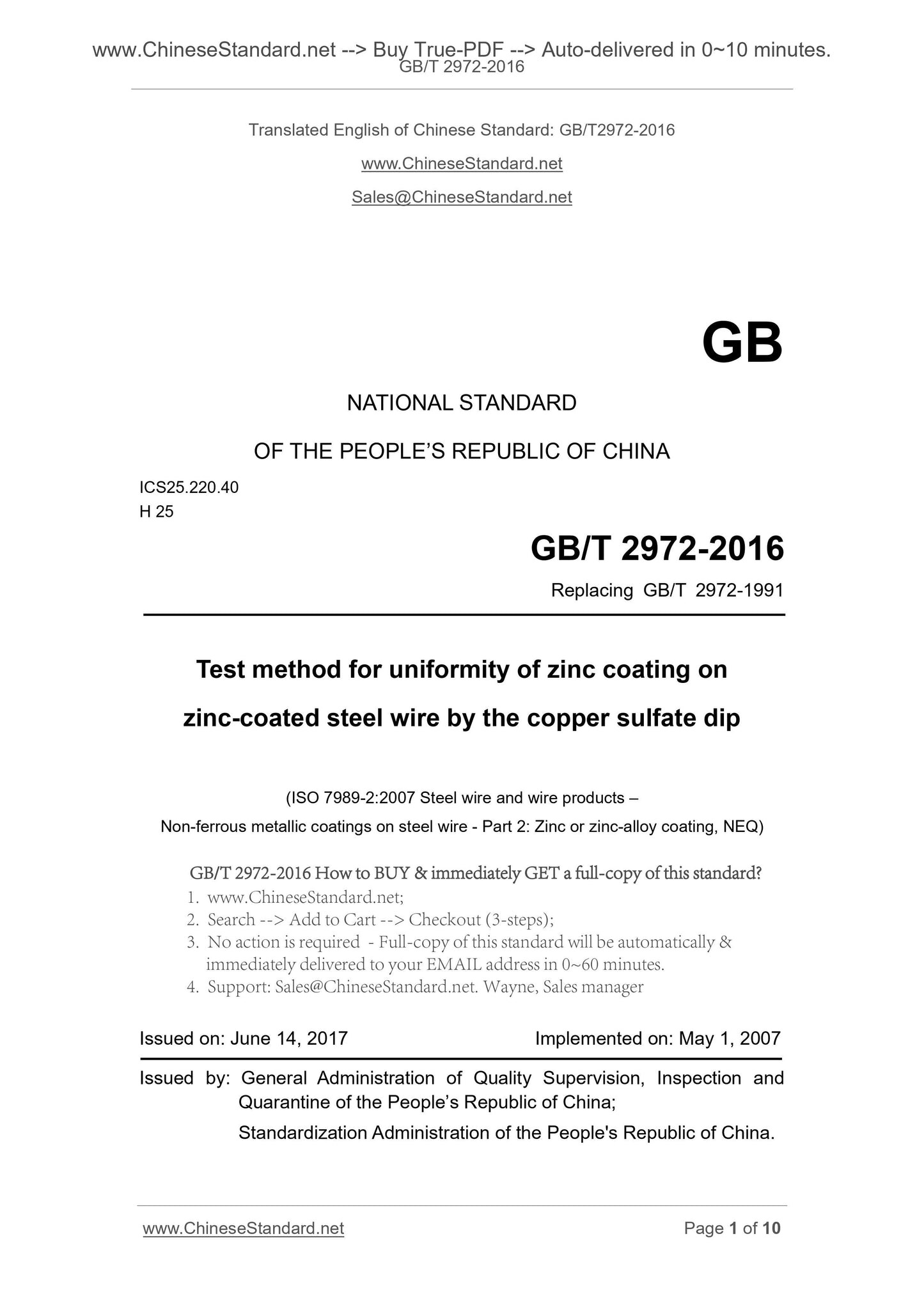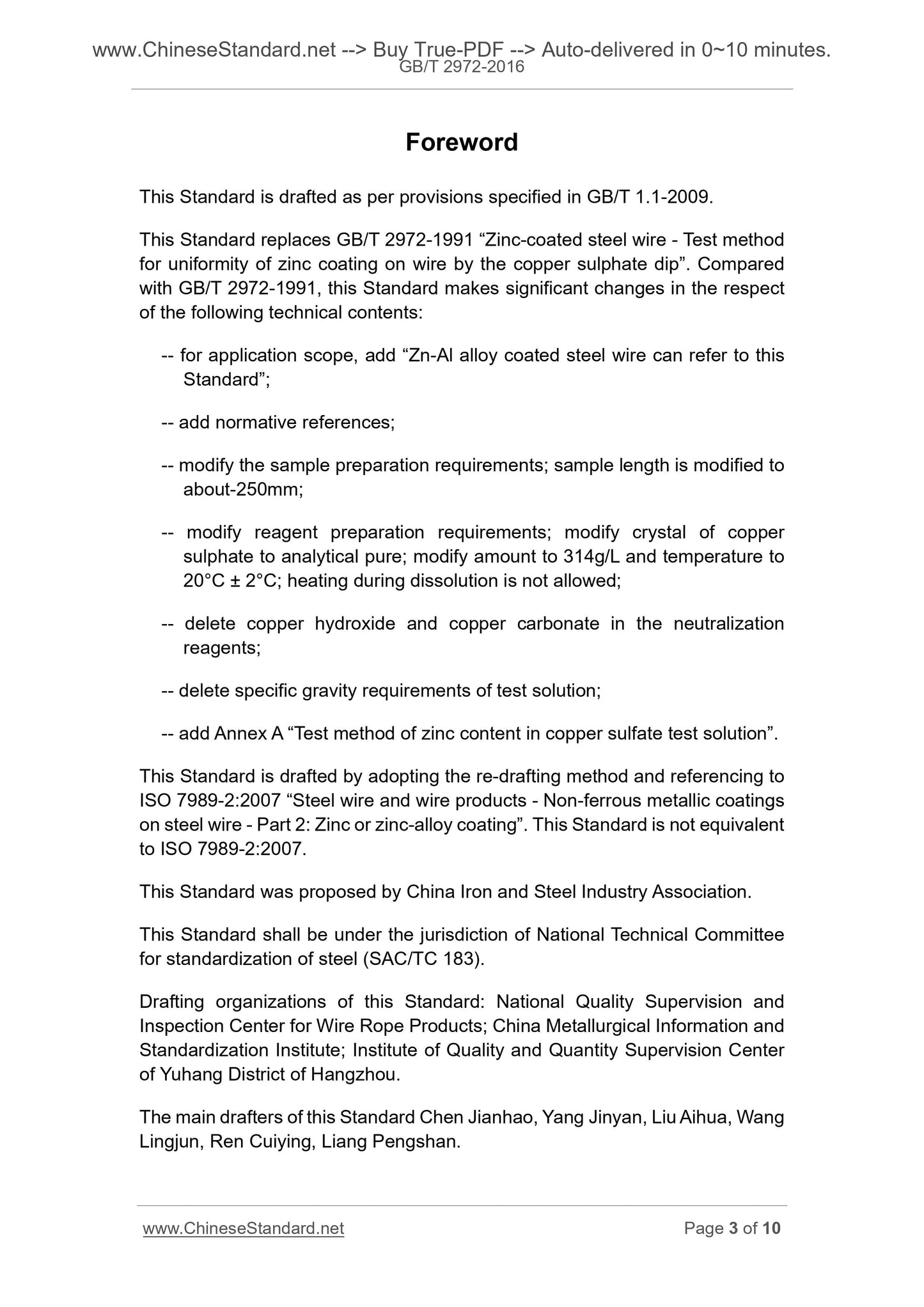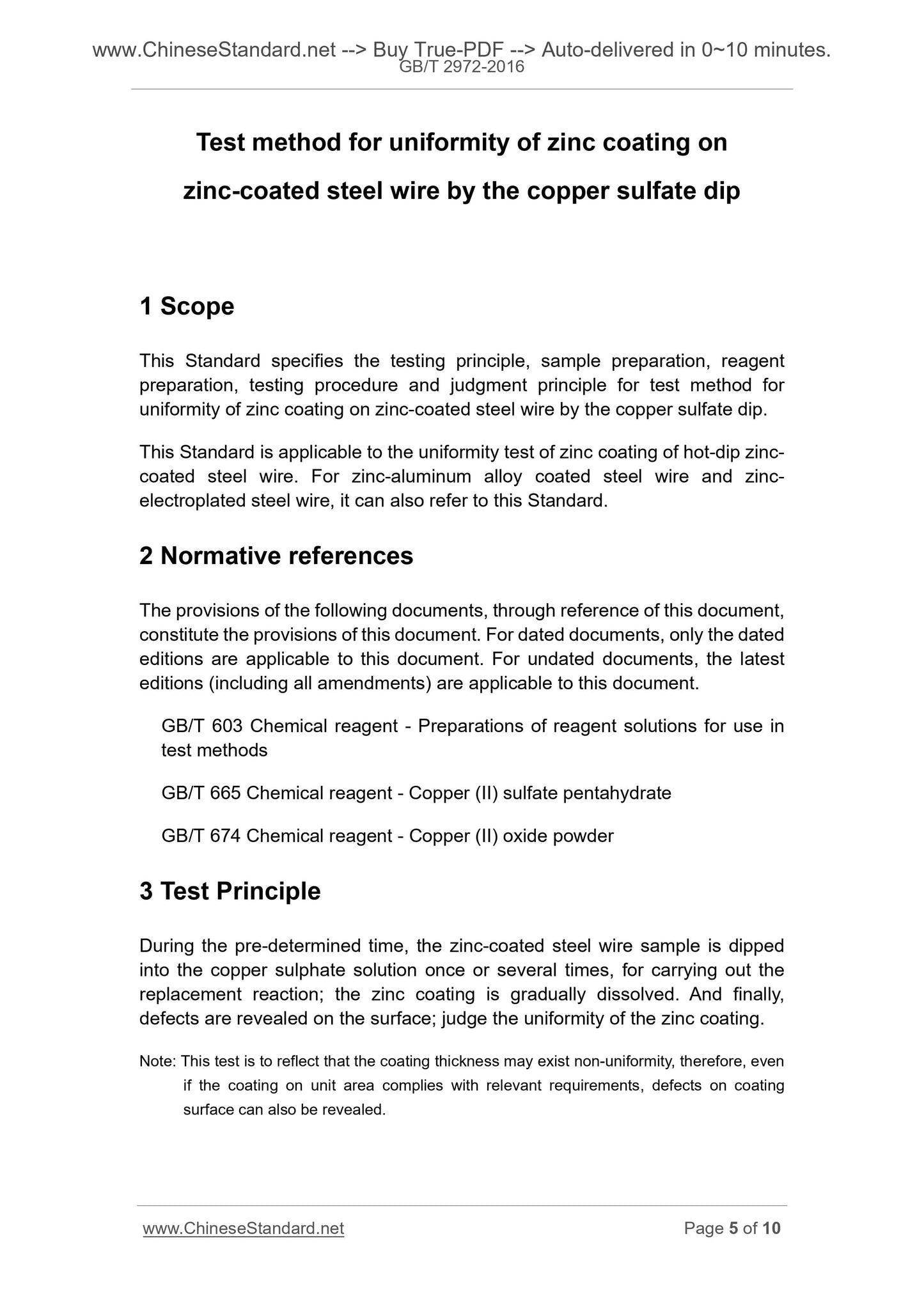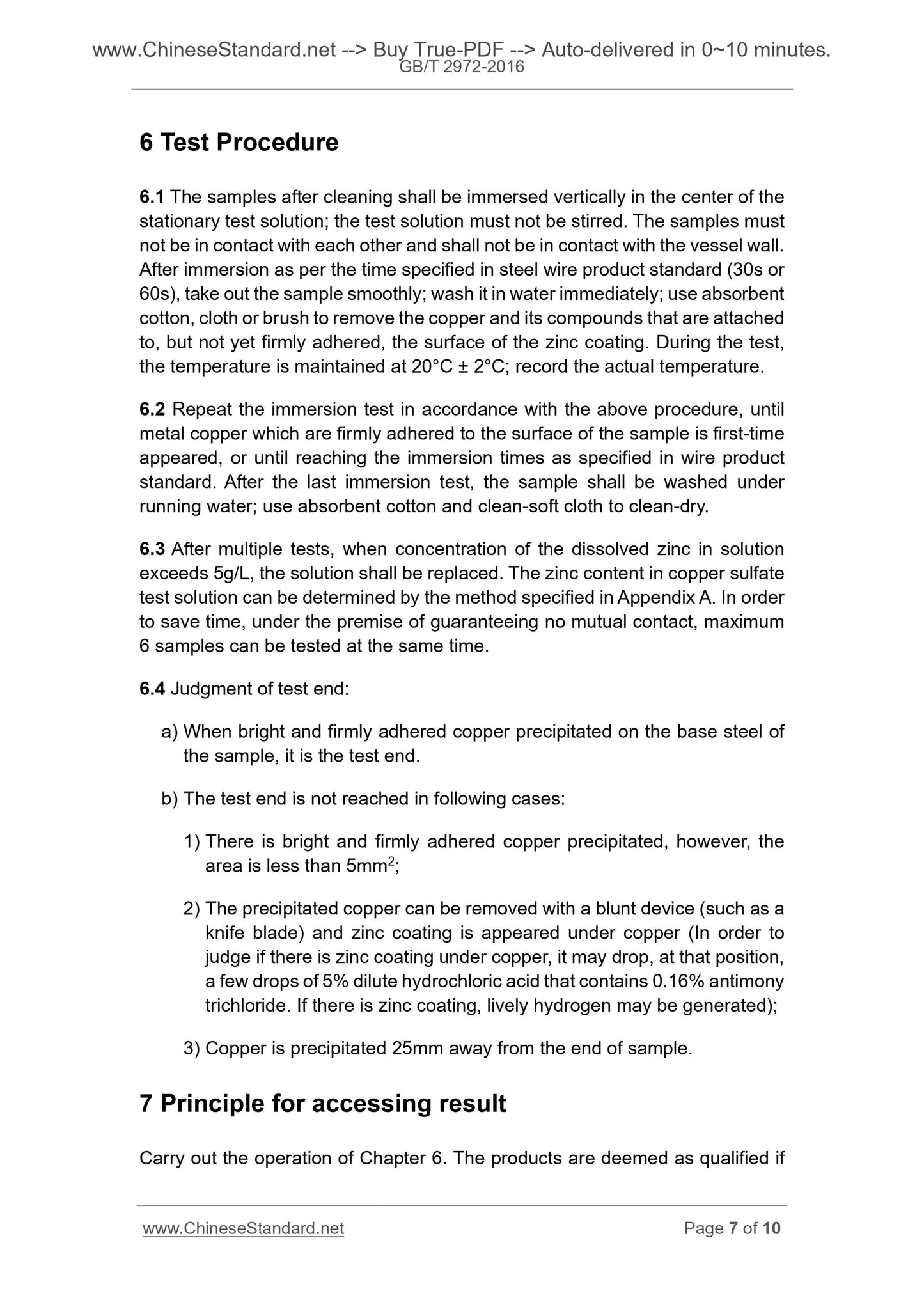1
/
of
5
www.ChineseStandard.us -- Field Test Asia Pte. Ltd.
GB/T 2972-2016 English PDF (GB/T2972-2016)
GB/T 2972-2016 English PDF (GB/T2972-2016)
Regular price
$90.00
Regular price
Sale price
$90.00
Unit price
/
per
Shipping calculated at checkout.
Couldn't load pickup availability
GB/T 2972-2016: Test method for uniformity of zinc coating on zinc-coated steel wire by the copper sulphate dip
Delivery: 9 seconds. Download (and Email) true-PDF + Invoice.Get Quotation: Click GB/T 2972-2016 (Self-service in 1-minute)
Newer / historical versions: GB/T 2972-2016
Preview True-PDF
Scope
This Standard specifies the testing principle, sample preparation, reagentpreparation, testing procedure and judgment principle for test method for
uniformity of zinc coating on zinc-coated steel wire by the copper sulfate dip.
This Standard is applicable to the uniformity test of zinc coating of hot-dip zinc-
coated steel wire. For zinc-aluminum alloy coated steel wire and zinc-
electroplated steel wire, it can also refer to this Standard.
Basic Data
| Standard ID | GB/T 2972-2016 (GB/T2972-2016) |
| Description (Translated English) | Test method for uniformity of zinc coating on zinc-coated steel wire by the copper sulphate dip |
| Sector / Industry | National Standard (Recommended) |
| Classification of Chinese Standard | H25 |
| Classification of International Standard | 25.220.40 |
| Word Count Estimation | 6,669 |
| Date of Issue | 6/14/2016 |
| Date of Implementation | 2017-05-01 |
| Older Standard (superseded by this standard) | GB/T 2972-1991 |
| Quoted Standard | GB/T 603; GB/T 665; GB/T 674 |
| Adopted Standard | ISO 7989-2-2007, NEQ |
| Regulation (derived from) | National Standard Announcement No. 8 of 2016 |
| Issuing agency(ies) | General Administration of Quality Supervision, Inspection and Quarantine of the People's Republic of China, Standardization Administration of the People's Republic of China |
| Summary | This standard specifies the galvanized steel wire zinc sulfate copper sulfate test method test principle, sample preparation, reagent preparation, test procedures and determine the principles. This standard applies to galvanized steel wire zinc layer uniformity test, zinc-aluminum alloy coated steel and galvanized steel wire can also refer to this standard. |
Share









